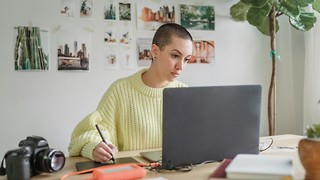Cambridge's Disciplinary Procedure
Analysis: Breaking the Silence must be substantiated
The university must first find its purpose in addressing cases of harassment and sexual misconduct before deciding reforms to be made, writes Aoife Hogan

Changing the burden of proof is one step in what needs to be a long process of thoroughly and thoughtfully substantiating the appearance and operation of the university’s policies and in-house support systems. The university does not have, and should not aspire to emulate, the powers of a criminal court. So, debate surrounding changing the burden of proof used in the University’s Formal Disciplinary Procedure must come down to the question of what the Procedure’s purpose really is in cases of harassment and sexual misconduct.
The university must prove that the campaign and its reforms are not just filling the void with white noise
The greatest onus of proof is on the university, today, tomorrow, on May 1 and beyond, to show us that it stands by Breaking the Silence. The university must prove that the campaign and its reforms are not just filling the void with white noise.
Its first purpose is to do right by both the complainant and the respondent, in the context of their mutual existence in the university. This point is not in dispute between those who are in favour of changing the standard of proof, and those who are not. I use the term ‘changing’, rather than ‘lowering’, purposively – to point out that shifting the standard of guilt does not at all mean that those pushing for change hope to see a rise in the number of ‘guilty’ verdicts. The students who signed the Women’s Campaign’s Open Letter, and the academics who posed student concerns to Regent House, hope to see the Procedure actually being used. We must first make the step to make the process more accessible and accommodating for all students, before hypothesising about the murkiness of the cases which may be brought forward.
It now needs to realise this duty, evinced by survivors trusting the Disciplinary Procedure to offer a real chance of positive change, and to facilitate a dialogue
This leads us to the Formal Disciplinary Procedure’s second purpose, no less important than the first – to provide a symbolic platform which encourages those survivors to speak up and report cases, especially those who do not wish to pursue legal channels, but who nonetheless want to take formal steps to feel safer at this university. The University, as an institution with codes of conduct, has recognised its duty to students in this regard. It now needs to realise this duty, evinced by survivors trusting the Disciplinary Procedure – a long and strenuous process - to offer a real chance of positive change, and to facilitate a dialogue.
Above all, we must ask whether the Formal Disciplinary Procedure, under the current model and the newly proposed one, exists within a holistic apparatus of in-house support services. The idea of providing institutional procedures depends upon the university respecting its duty of care to students and doing something about it. This goes far beyond featuring links to Cambridge Rape Crisis on the Breaking the Silence website, an external support system which is severely oversubscribed. It means more than workshops in Freshers’ Week and online campaigns. It means honesty, and honesty is reached through discussion, something which must not begin and end with May 1.
 News / Cambridge academics stand out in King’s 2026 Honours List2 January 2026
News / Cambridge academics stand out in King’s 2026 Honours List2 January 2026 Interviews / You don’t need to peak at Cambridge, says Robin Harding31 December 2025
Interviews / You don’t need to peak at Cambridge, says Robin Harding31 December 2025 Comment / What happened to men at Cambridge?31 December 2025
Comment / What happened to men at Cambridge?31 December 2025 News / Varsity’s biggest stories of 202531 December 2025
News / Varsity’s biggest stories of 202531 December 2025 Features / “It’s a momentary expression of rage”: reforming democracy from Cambridge4 January 2026
Features / “It’s a momentary expression of rage”: reforming democracy from Cambridge4 January 2026











